Electric vehicles (EVs) represent one of the most significant technological shifts in the history of transportation. By replacing internal combustion engines with high-efficiency electric drivetrains, EVs convert over 60% of electrical energy directly into mechanical motion, a level of efficiency conventional engines cannot approach. This is achieved through advanced power electronics, regenerative braking systems, and precision motor control, enabling minimal energy loss from battery to wheel.
More than just an alternative to gasoline-powered vehicles, EVs are engineered systems that integrate energy storage, power conversion, and digital control into a unified architecture. This allows them to deliver instantaneous torque, optimized energy usage, and zero tailpipe emissions, critical factors in meeting global sustainability objectives.
Over the last decade, the EV sector has expanded from a niche market to a core segment of the automotive industry, with global sales rising from thousands of units in 2010 to more than 6.6 million in 2021. This growth is driven by advancements in lithium-ion battery technology, the deployment of high-capacity charging infrastructure, and ongoing policy incentives from governments worldwide.
Automotive manufacturers are investing heavily in electric mobility platforms, shifting R&D focus from combustion optimization to software-defined, electrified vehicle systems. The EV revolution is not solely about reducing emissions, it is about enabling a fully connected, eco-efficient transport ecosystem that integrates seamlessly with renewable energy generation and smart grid technologies.
In the sections ahead, we’ll examine how EVs operate at a technical level, the key components that define their performance, and their pivotal role in shaping the future of sustainable transportation.
What is an EV?
An electric vehicle is propelled by one or more electric motors, drawing power entirely from battery storage instead of an internal combustion engine. Beyond cars, EVs include buses, trucks, e-bikes, and even ferries, making them central to the global transport transition. This isn’t just a mobility shift , it’s a move toward cleaner, quieter, and smarter mobility.
EVs have become a symbol of technological advancement and environmental consciousness. They represent a significant shift in automotive design, focusing on renewable energy sources and reducing reliance on fossil fuels. This shift is crucial in addressing global environmental concerns like air pollution and climate change.
The rise of EVs has also encouraged advancements in battery technology and charging infrastructure, making them more accessible and practical for daily use. Additionally, the adoption of EVs has influenced urban planning and energy policies, encouraging a more holistic approach to sustainable living.
In summary, an electric vehicle is more than just a car; it's a key component in the global movement towards a more sustainable and environmentally friendly future.
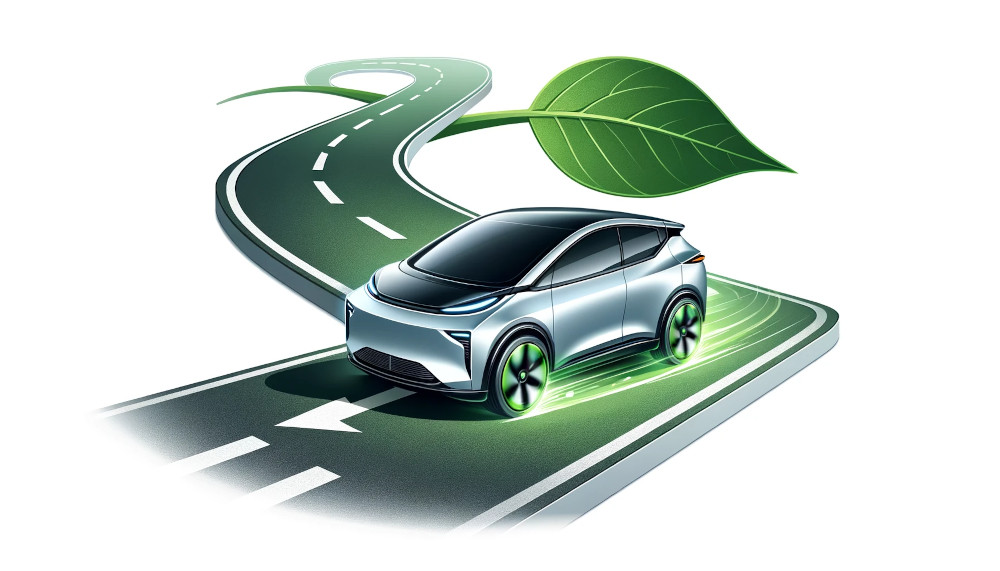
How Do Electric Cars Work?
Electric cars work by using electricity stored in batteries to power an electric motor, which turns the wheels. This process is fundamentally different from traditional cars that use internal combustion engines.
At the heart of an electric car is its battery pack, which stores electrical energy. This battery is similar to those found in portable electronics, but much larger. It powers the electric motor, which is responsible for driving the wheels. The motor converts electrical energy into mechanical power, offering a quiet and smooth driving experience.
One of the key features of electric cars is regenerative braking. When the driver applies the brakes, the electric motor runs in reverse, acting as a generator to convert the motion of the car back into electricity, which is then stored in the battery. This process enhances the efficiency of electric cars and extends the driving range.
Electric cars also come with sophisticated software that manages the flow of electrical energy, ensuring optimal performance and battery longevity. This software constantly monitors the battery's state, adjusting the power output and regenerative braking according to the driving conditions.
Charging an electric car is as simple as plugging it into a power source. The time it takes to charge varies depending on the car model and the type of charger used, ranging from a few hours to overnight.
| Electric Cars | Battery Pack | Regenerative Braking | Software & Charging |
|---|---|---|---|
| Work by using electricity stored in batteries. | Stores electrical energy for the motor. | Converts the car's motion back into electricity. | Manages power output and battery longevity. |
| Power an electric motor to turn the wheels. | Similar to portable electronics, but larger. | Enhances efficiency and extends driving range. | Monitors battery's state and adjusts power. |
| Different from internal combustion engines. | Powers the electric motor. | Integral part of an EV's energy system. | Charging varies from a few hours to overnight. |
What to Know About the 4 Types of EVs
The landscape of electric vehicles (EVs) is diverse and rapidly evolving. Different types of EVs cater to various needs and preferences, making the choice of going electric more accessible and appealing. Understanding the distinctions between the four main types of EVs is key for anyone considering a transition to more sustainable transportation.
Here's an extended comparison of these types:
Battery Electric Vehicle (BEVs):
-
Powered exclusively by electric batteries.
-
Typically offer a longer range per charge than other EV types.
-
Produce zero emissions, making them the most environmentally friendly option.
-
Require charging infrastructure but are increasingly supported by a growing network of charging stations.
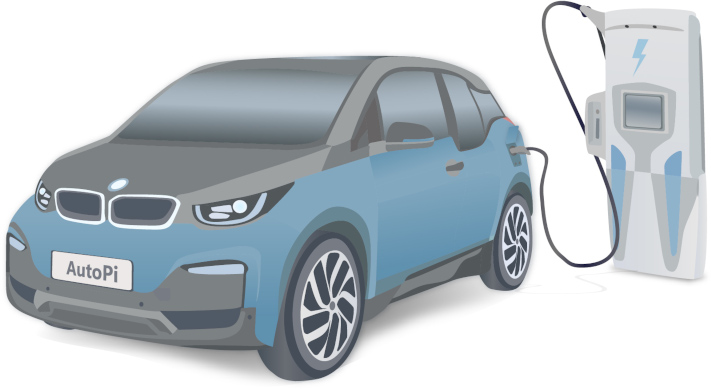
Hybrid Electric Vehicle (HEVs):
-
Utilize a combination of a traditional gasoline engine and an electric motor.
-
Batteries are self-charging through regenerative braking, eliminating the need for plugging in.
-
Offer better fuel efficiency than conventional cars, though they still rely on gasoline.
-
Ideal for those who are not ready to fully commit to a plug-in vehicle.
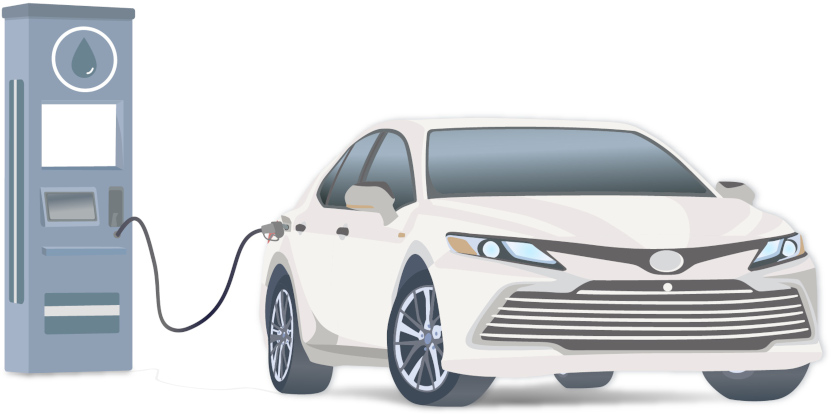
Plug-in Hybrid Electric Vehicle (PHEVs):
-
A blend between BEVs and HEVs, with both a gasoline engine and a plug-in rechargeable battery.
-
Can operate on electric power alone for short distances, switching to gasoline for longer trips.
-
Provide a balance between reduced emissions and range anxiety.
-
Suitable for drivers who have access to charging facilities but also require the extended range of gasoline.
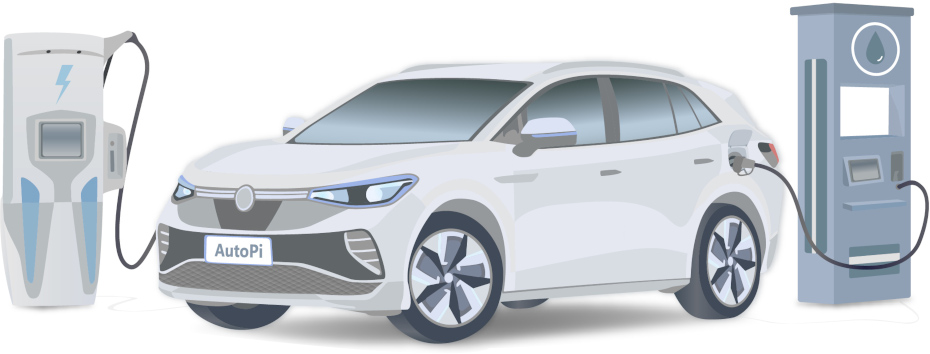
Full Cell Electric Vehicle (FCEVs):
-
Run on electricity generated by hydrogen fuel cells.
-
Emit only water vapor and heat, making them a zero-emission alternative.
-
Generally have a quicker refueling time compared to battery charging.
-
Limited by the current scarcity of hydrogen refueling stations, making them less practical in some areas.
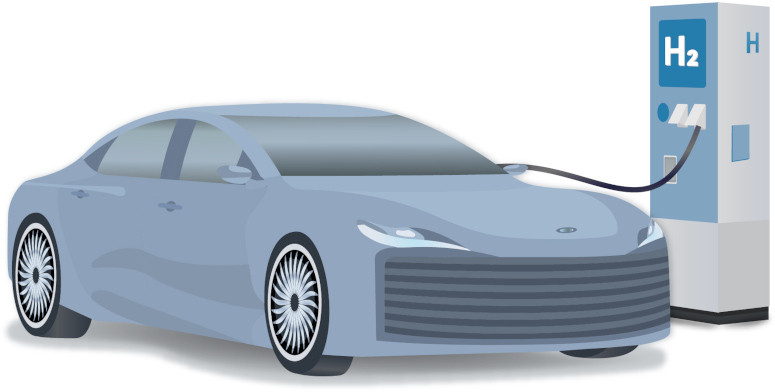
Each type of EV presents a unique set of benefits and challenges. From the eco-friendly purity of BEVs to the practical versatility of PHEVs, and the innovative technology of FCEVs, the world of electric vehicles is rich with options. Understanding these variations can help consumers make informed decisions about which type of EV aligns best with their lifestyle and driving needs.
| Type | Powertrain | Fueling / Charging | Emissions |
|---|---|---|---|
| BEV | Battery & electric motor only | Charging from external source | Zero tailpipe emissions |
| PHEV | Battery + ICE | Plug-in charge + gasoline | Lower emissions, not zero |
| HEV | Battery assists ICE | No plug-in charging | Reduced emissions |
| FCEV | Fuel cell + electric motor | Hydrogen fueling | Water vapor only |
Pros and Cons of Electric Vehicles
Electric Vehicles (EVs) have surged in popularity as a sustainable alternative to traditional gasoline-powered cars. They offer several advantages but also come with their own set of challenges. Here's a balanced look at the pros and cons of electric vehicles:
Pros
-
Environmental Impact: EVs produce zero tailpipe emissions, significantly reducing air pollution compared to combustion engine vehicles. This contributes to a cleaner and healthier environment.
-
Energy Efficiency: Electric vehicles are more energy-efficient than their gasoline counterparts. They convert a higher percentage of the electrical energy from the grid to power at the wheels, leading to better overall performance and less energy waste.
-
Lower Operating Costs: EVs have fewer moving parts, resulting in lower maintenance costs. Additionally, electricity is cheaper than gasoline in many areas, making EVs less expensive to operate per mile.
-
Incentives and Rebates: Many governments offer tax incentives, rebates, and other benefits for EV owners, making them more affordable to purchase and own.
-
Innovation and Technology: Electric vehicles are often equipped with the latest technology and features, including advanced driver-assistance systems (ADAS), EV telematics, connectivity, and infotainment systems.
Cons
-
Range Anxiety: Despite improvements in battery technology, many EVs still have limited range compared to gasoline vehicles, leading to anxiety about running out of charge.
-
Charging Infrastructure: While growing, the charging infrastructure is not yet as widespread as gas stations, making long-distance travel more challenging in some areas.
-
Upfront Costs: The initial purchase price of electric vehicles can be higher than that of similar gasoline vehicles, although this is offset over time by lower operating costs.
-
Battery Replacement: Although battery life has improved, replacing an EV battery can be expensive, and the environmental impact of battery production and disposal remains a concern.
-
Limited Choices: While the selection of electric vehicles is rapidly expanding, there are still fewer EV models available compared to traditional vehicles, particularly in certain segments like trucks and large SUVs.
Electric vehicles represent a promising step towards sustainable transportation, but it's important for potential buyers to consider both the benefits and drawbacks. As technology advances and infrastructure expands, many of the current cons are likely to diminish, making EVs an increasingly attractive option for more consumers.
The Ongoing Evolution of EVs
The history of electric vehicles (EVs) is a fascinating journey that spans over a century, marked by innovation, decline, and resurgence. Here's a concise overview:
-
Early 1800s to 1900s: The inception of EVs dates back to the early 19th century. Small-scale electric cars were being developed as early as the 1830s. However, it wasn't until the late 1800s and early 1900s that they gained popularity. By the turn of the century, electric vehicles accounted for approximately a third of all vehicles on the road in the United States.
-
1910s to 1920s: The popularity of electric vehicles began to fade in the 1910s. The introduction of the Ford Model T in 1908, which was significantly cheaper than EVs, along with advancements in internal combustion engine vehicles (ICEVs), led to a decline in EV sales. By the 1920s, electric vehicles had almost entirely disappeared from the market.
-
1960s to 1990s: Interest in electric vehicles resurfaced in the 1960s and 1970s, partly due to the oil crisis and growing environmental concerns. However, it wasn't until the 1990s that major automakers began experimenting with EV technology again, leading to the release of models like the General Motors EV1.
-
Early 2000s: The early 2000s saw a gradual increase in the development and adoption of EVs, driven by technological advancements and increasing awareness of environmental issues. In 2008, the Tesla Roadster was introduced, which played a significant role in changing the public perception of EVs as viable and desirable.
-
2010s to Today: The last decade has witnessed an exponential growth in the EV market. Global EV sales have skyrocketed, with over 2 million units sold worldwide in 2018, accounting for about 2.2% of the global car market. This trend continued, with significant growth year over year. By 2020, EVs represented about 4.2% of global car sales, and this percentage is expected to keep rising.
-
Current State: Today, almost every major car manufacturer has either released or is planning to release electric vehicle models. Governments around the world are supporting this shift through incentives and regulations aimed at reducing carbon emissions. The EV market is projected to grow significantly in the coming years, with some estimates suggesting that EVs could represent over 50% of all new car sales by 2040.
As the global shift toward sustainable mobility accelerates, electric vehicles stand at the forefront of innovation, combining advanced engineering with environmental responsibility. By leveraging intelligent energy management, seamless connectivity, and scalable charging infrastructure, EVs are transforming the way we move people and goods. The transition is not just inevitable, it is already underway, and those who adapt early will lead in efficiency, performance, and sustainability.
Discover how AutoPi’s connected vehicle technology can unlock the full potential of your electric fleet. From real-time battery health monitoring to advanced telematics analytics, our platform delivers the insights and control you need to maximize efficiency, extend vehicle lifespan, and reduce operational costs.






